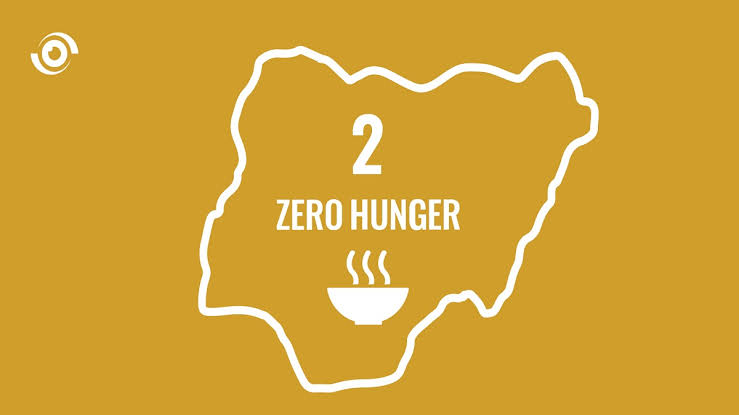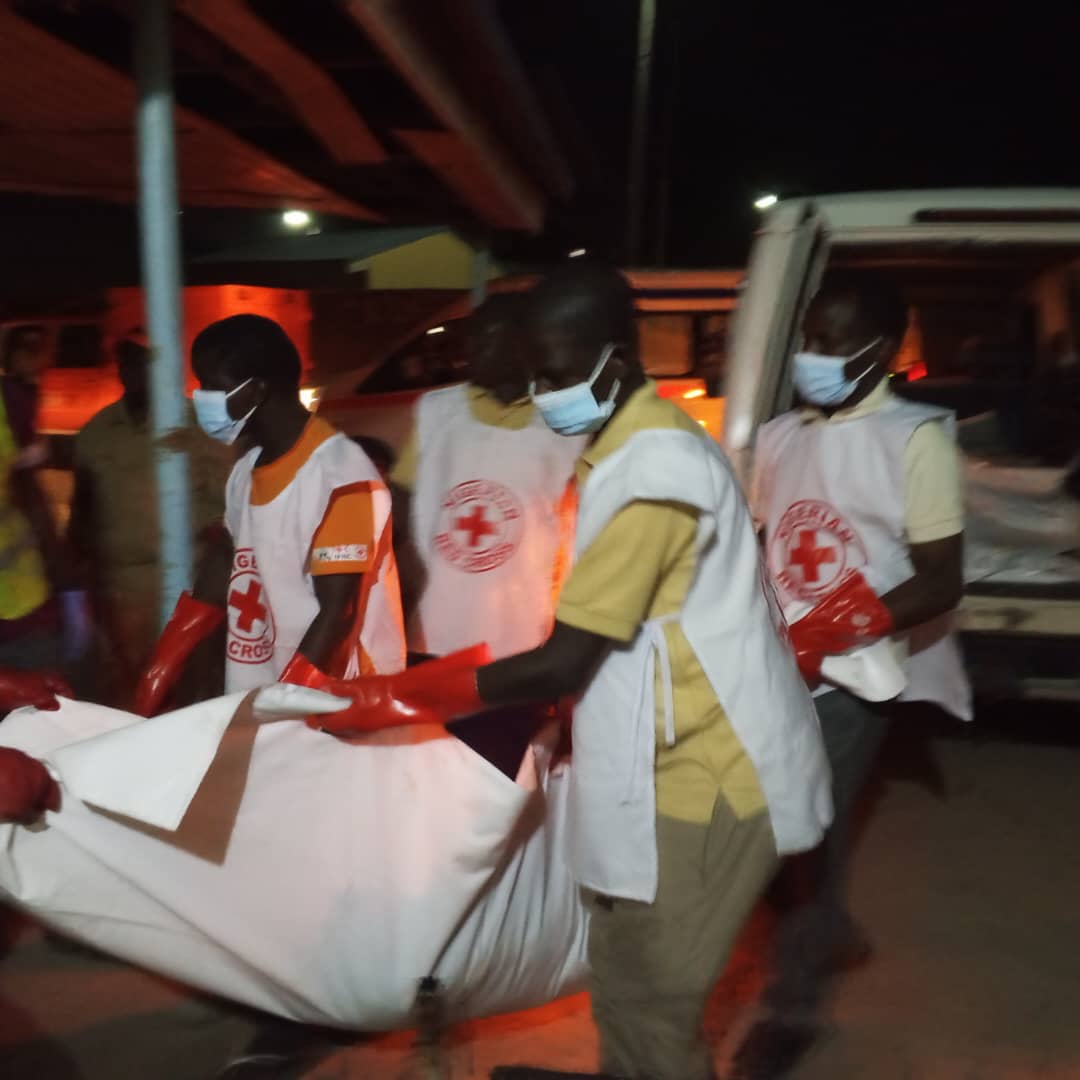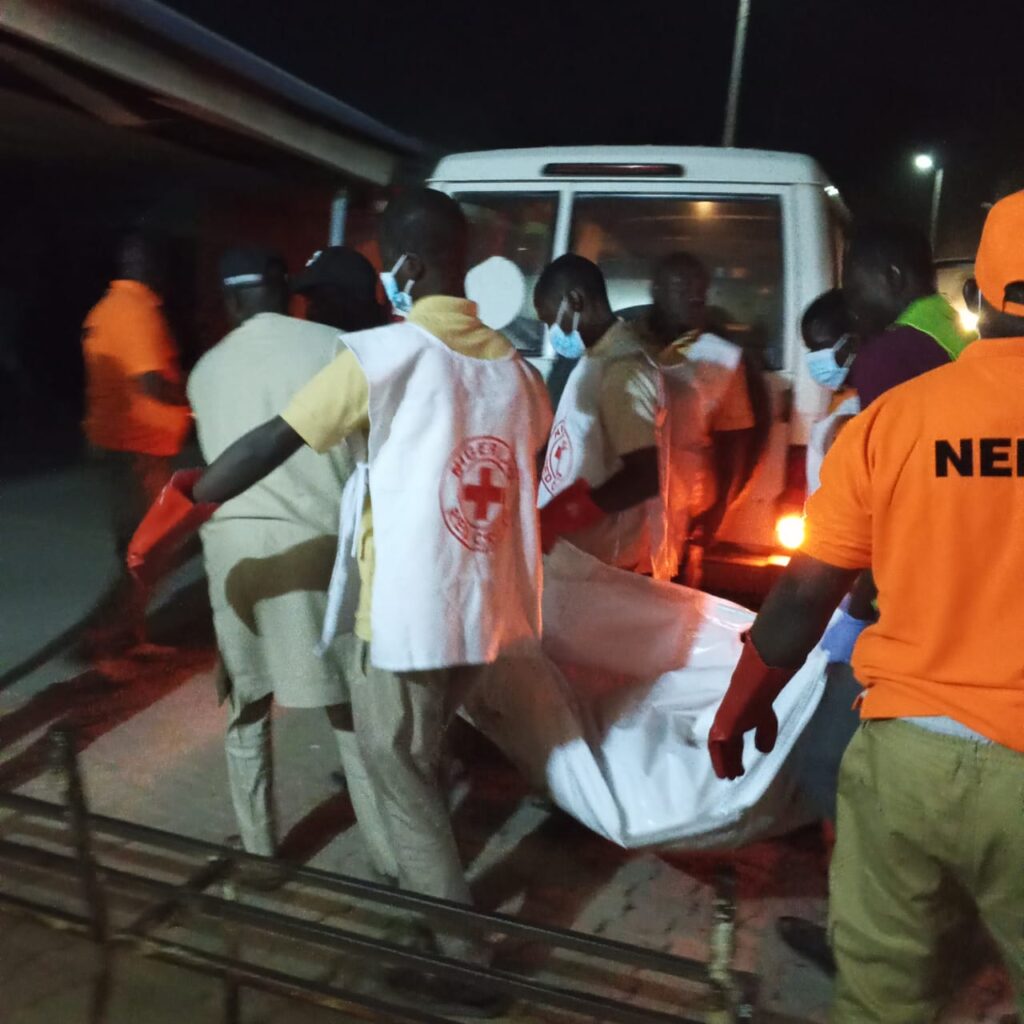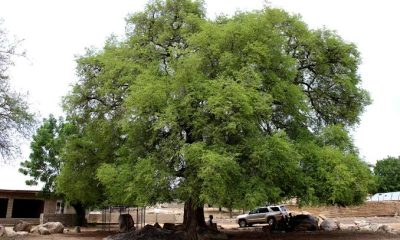News
UN: SDG 2, Zero Hunger may not be Achieved in 2030

UN: SDG 2, Zero Hunger may not be Achieved in 2030
***1/5th of Africans Faced Hunger in 2023
By: Michael Mike
The World is at the risk of not achieving Sustainable Development Goal (SDG) 2 and Zero Hunger by 2030.
The annual report, launched this year in the context of the G20 Global Alliance against Hunger and Poverty Task Force Ministerial Meeting in Brazil, issued by five United Nations (UN) agencies has warned.
The report which showed that the world has been set back 15 years, with levels of undernourishment comparable to those in 2008-2009, disclosed that around 733 million people faced hunger in 2023, equivalent to one in eleven people globally and one in five in Africa, according to the latest State of Food Security and Nutrition in the World (SOFI) published on Wednesday by five United Nations specialized agencies.
A statement on Thursday by the United Nations agencies said despite some progress in specific areas such as stunting and exclusive breastfeeding, an alarming number of people continue to face food insecurity and malnutrition as global hunger levels have plateaued for three consecutive years, with between 713 and 757 million people undernourished in 2023—approximately 152 million more than in 2019 when considering the mid-range (733 million).
The statement said: “Regional trends vary significantly: the percentage of the population facing hunger continues to rise in Africa (20.4 percent), remains stable in Asia (8.1 percent)—though still representing a significant challenge as the region is home to more than half of those facing hunger worldwide —and shows progress in Latin America (6.2 percent). From 2022 to 2023, hunger increased in Western Asia, the Caribbean, and most African subregions.
“If current trends continue, about 582 million people will be chronically undernourished in 2030, half of them in Africa, warn the Food and Agriculture Organisation of the United Nations (FAO), the International Fund for Agricultural Development (IFAD), the United Nations Children’s Fund (UNICEF), the UN World Food Programme (WFP), and the World Health Organisation (WHO). This projection closely resembles the levels seen in 2015 when the Sustainable Development Goals the were adopted, marking a concerning stagnation in progress.”
The report highlighted that access to adequate food remains elusive for billions. In 2023, around 2.33 billion people globally faced moderate or severe food insecurity, a number that has not changed significantly since the sharp upturn in 2020, amid the COVID-19 pandemic. Among those, over 864 million people experienced severe food insecurity, going without food for an entire day or more at times.
The report added that this number has remained stubbornly high since 2020 and while Latin America showed improvement, broader challenges persist, especially in Africa where 58 percent of the population is moderately or severely food insecure.
“The lack of economic access to healthy diets also remains a critical issue, affecting over one-third of the global population. With new food price data and methodological improvements, the publication reveals that over 2.8 billion people were unable to afford a healthy diet in 2022. This disparity is most pronounced in low-income countries, where 71.5 percent of the population cannot afford a healthy diet, compared to 6.3 percent in high-income countries. Notably, the number dropped below pre-pandemic levels in Asia and in Northern America and Europe, while it increased substantially in Africa.
“While progress has been made in increasing exclusive breastfeeding rates among infants to 48%, achieving global nutrition targets will be a challenge. Low birthweight prevalence has stagnated around 15%, and stunting among children under five, while declining to 22.3%, still falls short of achieving targets. Additionally, the prevalence of wasting among children has not seen significant improvement while anaemia in women aged 15 to 49 years has increased,” the report further said.
According to the report: “Similarly, new estimates of adult obesity show a steady increase over the last decade, from 12.1 percent (2012) to 15.8 percent (2022). Projections indicate that by 2030, the world will have more than 1.2 billion obese adults. The double burden of malnutrition – the co-existence of undernutrition together with overweight and obesity – has also surged globally across all age groups. Thinness and underweight have declined in the last two decades, while obesity has risen sharply.
“These trends underscore the complex challenges of malnutrition in all its forms and the urgent need for targeted interventions as the world is not on track to reach any of the seven global nutrition targets by 2030, the five agencies indicate.
“Food insecurity and malnutrition are worsening due to a combination of factors, including persisting food price inflation that continues to erode economic gains for many people in many countries. Major drivers like conflict, climate change, and economic downturns are becoming more frequent and severe. These issues, along with underlying factors such as unaffordable healthy diets, unhealthy food environments and persistent inequality, are now coinciding simultaneously, amplifying their individual effects.”
This year’s report’s theme “Financing to end hunger, food insecurity and all forms of malnutrition’’, emphasized that achieving SDG 2 Zero Hunger requires a multi-faceted approach, including transforming and strengthening agrifood systems, addressing inequalities, and ensuring affordable and accessible healthy diets for all. It calls for increased and more cost-effective financing, with a clear and standardized definition of financing for food security and nutrition.
The heads of the five UN agencies, FAO Director-General QU Dongyu; IFAD President Alvaro Lario; UNICEF Executive Director Catherine Russell; WFP’s Executive Director Cindy McCain; and WHO Director-General Dr. Tedros Adhanom Ghebreyesus write in the report’s Foreword: “Estimating the gap in financing for food security and nutrition and mobilizing innovative ways of financing to bridge it must be among our top priorities. Policies, legislation and interventions to end hunger and ensure all people have access to safe, nutritious and sufficient food (SDG Target 2.1), and to end all forms of malnutrition (SDG Target 2.2) need significant resource mobilization. They are not only an investment in the future, but our obligation. We strive to guarantee the right to adequate food and nutrition of current and future generations”.
The statement said, as highlighted during a recent event in the High-Level Political Forum at UN headquarters in New York, the report underscores that the looming financing gap necessitates innovative, equitable solutions, particularly for countries facing high levels of hunger and malnutrition exacerbated by climate impacts.
It said: “Countries most in need of increased financing face significant challenges in access. Among the 119 low- and middle-income countries analyzed, approximately 63 percent have limited or moderate access to financing. Additionally, the majority of these countries (74 percent) are impacted by one or more major factors contributing to food insecurity and malnutrition. Coordinated efforts to harmonize data, increase risk tolerance, and enhance transparency are vital to bridge this gap and strengthen global food security and nutrition frameworks.
The FAO Director-General, Qu Dongyu said: “Transforming agrifood systems is more critical than ever as we face the urgency of achieving the SDGs within six short years. FAO remains committed to supporting countries in their efforts to eradicate hunger and ensure food security for all. We will work together with all partners and with all approaches, including the G20 Global Alliance against Hunger and Poverty, to accelerate the needed change. Together, we must innovate and collaborate to build more efficient, inclusive, resilient, and sustainable agrifood systems that can better withstand future challenges for a better world.”
IFAD President, Alvaro Lario: “The fastest route out of hunger and poverty is proven to be through investments in agriculture in rural areas. But the global and financial landscape has become far more complex since the Sustainable Development Goals were adopted in 2015. Ending hunger and malnutrition demands that we invest more – and more smartly. We must bring new money into the system from the private sector and recapture the pandemic-era appetite for ambitious global financial reform that gets cheaper financing to the countries who need it most.”
UNICEF Executive Director, Catherine Russell: “Malnutrition affects a child’s survival, physical growth, and brain development. Global child stunting rates have dropped by one third, or 55 million, in the last two decades, showing that investments in maternal and child nutrition pay off. Yet globally, one in four children under the age of five suffers from undernutrition, which can lead to long-term damage. We must urgently step-up financing to end child malnutrition. The world can and must do it. It is not only a moral imperative but also a sound investment in the future.”
WFP Executive Director, Cindy McCain: “A future free from hunger is possible if we can rally the resources and the political will needed to invest in proven long-term solutions. I call on G20 leaders to follow Brazil’s example and prioritize ambitious global action on hunger and poverty. “We have the technologies and know-how to end food insecurity – but we urgently need the funds to invest in them at scale. WFP is ready to step up our collaboration with governments and partners to tackle the root causes of hunger, strengthen social safety nets and support sustainable development so every family can live in dignity.”
WHO Director-General, Dr. Tedros Adhanom Ghebreyesus: “The progress we have made on reducing stunting and improving exclusive breastfeeding shows that the challenges we face are not insurmountable. We must use those gains as motivation to alleviate the suffering that millions of people around the world endure every day from hunger, food insecurity, unhealthy diets and malnutrition. The substantial investment required in healthy, safe and sustainably produced food is far less than the costs to economies and societies if we do nothing.”
The State of Food Security and Nutrition in the World is an annual report jointly prepared by the Food and Agriculture Organisation of the United Nations (FAO), the International Fund for Agricultural Development (IFAD), the United Nations Children’s Fund (UNICEF), the UN World Food Programme (WFP) and the World Health Organisation (WHO).
Since 1999, it has monitored and analysed the world’s progress towards ending hunger, achieving food security and improving nutrition. It also provides an in-depth analysis of key challenges for achieving these goals in the context of the 2030 Agenda for Sustainable Development. The report targets a wide audience, including policymakers, international organizations, academic institutions and the general public.
This year’s theme is timely and relevant in the run-up to the Summit of the Future, and the Fourth International Conference on Financing for Development in 2025.
UN: SDG 2, Zero Hunger may not be Achieved in 2030
News
Zulum-“Protect Our Sacred Bond,” Celebrates Peaceful Year in Christmas Message

Zulum-“Protect Our Sacred Bond,” Celebrates Peaceful Year in Christmas Message
By: Our Reporter
With profound gratitude to God for sparing our lives one full year to another Christmas celebration, Borno State Governor, Professor Babagana Umara Zulum felicitate with the Christian community across the state on the occasion of Christmas.
The Governor is currently engaged in a four-day security and resilience building tour across Northern Borno. The tour includes visits to military formations to boost their morale, and to communities affected by the insurgency, where he is working to build their confidence and provide tangible democratic benefits.
In a message by his Spokesperson Dauda Iliya, Governor Zulum expressed gratitude to God Almighty for the return of relative peace in the state.
“For us in Borno State, the period between the 2024 to the 2025 Christmas celebrations has been one full year of celebrating enviable all-encompassing reconstruction and recovery,” Zulum stated.
“The progress is not only in terms of physical infrastructure, but also in terms of the peace and forbearance, mutual goodwill and harmonious coexistence among the Muslim and Christian communities, which our beleaguered state very critically desires to launch itself back to prosperity and glorious past,” he added.
“I feel obliged to express my most heartfelt gratitude to God for enabling me to preside over the state one full year, witnessing a gladdening restoration and maintenance of these required peace, mutual goodwill and harmony between the the Muslim and Christian communities which bonded us tightly together as a solid people, but which the over a decade Boko Haram insurgency threatened to completely destroy.
“A noteworthy part of the Muslim-Christian harmonious coexistence and goodwill reconstruction and maintenance was my recent high-level consultation meeting with the leadership of Jama’atu Nasril Islam (JNI) and Christian Association of Nigeria (CAN), focused on strengthening collaborative efforts between the state government and religious bodies to combat the lingering threat of insecurity and foster lasting peace in Borno State.
“At that meeting, I underscored the critical role of religious leaders in promoting tolerance, unity and peace across the state because Borno, like many states, has unique and beautiful family composition dynamics.
“It is common to find under one roof, brothers and sisters, uncles and aunts, who profess different faiths. We share meals, we celebrate festivities and milestones, we grieve losses together, as one family, bound by blood and love that transcends religious labels. This is our reality.
“I stressed that our enviable strength emanates from this reality. I will still, therefore, stress that we must protect this sacred bond within our homes and allow it to define our individual, as well as intra- and cross-community engagements.
“In sustenance of my tradition of just, fair and equitable treatment of both communities in festive seasons, I have, also, this year, I announced support to the Christian community and non indigenes, which includes free transportation to non-indigenes to different parts of the country, humanitarian support to over 6,000 vulnerable Christians, cash gifts to widows and orphans, sponsorship of Christian pilgrimage and other interventions.
I am always disposed to rendering such support, and even more, whenever the need arises.
Governor Babagana Zulum urge every citizen of the state, irrespective of faith, to come together in the collective search for lasting security, peaceful and harmonious coexistence as the most-critical foundation for true reconstruction, recovery and prosperity.
Zulum-“Protect Our Sacred Bond,” Celebrates Peaceful Year in Christmas Message
News
Gov. Zulum condemns Christmas Eve explosion in Borno

Gov. Zulum condemns Christmas Eve explosion in Borno
By: Bodunrin Kayode
About five people are feared dead yesterday evening as a suicide bomber detonates improvised explosive devices (IEDs) strapped to his body in a Maiduguri mosque in the popular Gamboru market, which is visited by traders from all over the country, including bordering countries.
The deaths, which were as a result of a suicide explosion, occurred at a mosque inside Gomboru Market, where the suspect had sneaked into a mosque, disguised as a faithful during “Magrib prayer.”

Sources within the market community said he was not a regular at the mosque, and they could also not explain how he lined up with the others or how he came to the community unnoticed to cause such a damnation.
As of the time of writing this report, the explosion had left several residents within the market community injured, while the most fatal ones have been rushed to nearby general hospitals for immediate treatment to stop the bleeding, which usually escalates the bleeding.

As of the time of writing this report, the military and police authorities had confirmed that about five people had died from the attack, which caused a lot of people to scamper for safety, causing massive gridlock around the customs area.
Reaction of the military
Reacting to the incident, the military said that about 32 civilians sustained all manner of injuries from the incident.
In a release signed by Lt. Col. Sanni Uba, it went on to state that the incident occurred at about 6pm yesterday at a mosque located within Gamboru Market in Maiduguri Metropolitan Council (MMC), while Muslim faithfuls were observing evening prayers.
“Preliminary findings indicated that the incident was caused by a suspected Boko Haram Terrorist (BHT) suicide bomber, who detonated an improvised explosive device, killing himself and 2 civilians on the scene.

“Troops, in conjunction with the Nigeria Police Explosive Ordnance Disposal (EOD) team, other sister security agencies, the Borno State Government, and NEMA, responded promptly, secured, and cordoned off the affected area to prevent further harm and ensure public safety.
“Casualties were immediately evacuated to the General Hospital and the Teaching Hospital in Maiduguri for prompt medical attention.
“A total of 32 civilians sustained varying degrees of injuries. Regrettably, 2 of the injured civilians were later confirmed dead at the hospital, while 2 others are currently in critical condition. The remaining injured persons are stable and receiving appropriate medical care.
“Troops and other security agencies have since intensified surveillance and security measures within Maiduguri and surrounding areas.
“Members of the public are advised to remain calm and security conscious, especially during the yuletide season. The public is also urged to be on the lookout for teenagers with suspicious looks.
“It is advised to avoid crowded places and maintain extra vigilance at religious places, especially churches during the yelutide period. Citizens are urged to promptly report any suspicious persons or activities to the nearest security post.
“OPHK commiserates with the families of the deceased and assures the public of its continued commitment to safeguarding lives and property.”
Zulum Condemns Maiduguri Mosque Suicide Attack, Calls for Vigilance in Worship, Public Places
Meanwhile, Governor Babagana Zulum has condemned, in strong terms, the suicide explosion at the Gomboru market mosque in Maiduguri metropolis Wednesday evening.
Governor Zulum, conveying his profound condolences from the frontline in northern Borno through his Special Adviser on Media, Dauda Iliya, called for increased vigilance and heightened security measures, particularly in places of worship during the festive period.
“I am deeply saddened by the Gamboru mosque suicide attack, which occurred on Wednesday evening when worshippers were performing Maghrib prayer, killing 5 people and injuring 35 others. The act is utterly condemnable, barbaric, and inhumane.
“Attacking a place of worship is a desecration of the sanctity of the mosque at a time when Muslim faithful are performing acts of worship.
“I wish to express my condolences to the families of all those that lost their lives in the attack and pray for the repose of their souls and for the speedy recovery of those injured,” he stated.
The governor further assured that adequate measures have been taken to forestall any security breach during the festive period and beyond.
IEDs have been a major challenge in the 16-year-old insurgency war, which has been fought by Nigeria in the Northeast theater of operation, Hadin Kai.
Meanwhile, residents went about their activities in peace hours after the gridlock was eased between customs and the international route leading to Gamboru Ngala and out of the country.
Gov. Zulum condemns Christmas Eve explosion in Borno
News
Christmas, New Year: Shaibu reaffirms commitment to professional, combat-ready Nigerian Army

Christmas, New Year: Shaibu reaffirms commitment to professional, combat-ready Nigerian Army
By: Zagazola Makama
As Nigerians join Christians around the world to celebrate Christmas 2025 and look ahead to the New Year 2026, the Chief of Army Staff (COAS), Lt.-Gen. Waidi Shaibu, has used the festive season to reaffirm the Nigerian Army’s resolve to remain a professional, adaptable and combat-ready force in the defence of the nation.
In a goodwill message to officers, soldiers, civilian staff and their families, Shaibu described Christmas as a season of reflection, renewal of faith and thanksgiving, noting that the values it represents love, sacrifice, compassion, peace and unity are also central to the ethos of the Nigerian Army.
According to him, the past year has been marked by significant challenges and notable achievements across various theatres of operation, where troops have continued to demonstrate resilience and professionalism in the face of evolving security threats.
“The Nigerian Army continues to demonstrate exceptional professionalism in all theatres of operation in the defence of our fatherland,” the army chief said, attributing these achievements to divine guidance and the commitment of personnel.
A major focus of the COAS’ message was the sacrifice of troops deployed in operational areas who, he noted, would be unable to celebrate the yuletide season with their families due to the demands of duty. He described their absence from home as a profound sacrifice that underscores their dedication to national service.
Shaibu assured personnel that his leadership would continue to prioritise professionalism, combat readiness and sound administration, with increased attention to welfare, recognition of excellence, and a transparent reward and sanction system.
He explained that these measures align with his command philosophy of advancing the transformation of the Nigerian Army into a force capable of decisively discharging its constitutional responsibilities within a joint and multi-agency environment.
Beyond the troops at the frontlines, the COAS paid glowing tribute to the families of officers and soldiers, describing them as the “unseen strength” behind the success of the army. He said the Nigerian Army remained committed to improving welfare programmes designed to support military families.
The message also illustrates the importance of collaboration, as Shaibu acknowledged the support of sister services, security and intelligence agencies, ministries and departments, as well as state governors, traditional rulers and host communities.
He said such cooperation and synergy remained critical to sustaining peace and security across the country.
Looking ahead to 2026, the army chief expressed optimism, pledging that the Nigerian Army would intensify efforts to address emerging threats, consolidate gains already achieved, strengthen intelligence capabilities and further boost morale and welfare.
He urged officers and soldiers to remain disciplined and security-conscious during the festive season, while upholding the highest standards of conduct.
Shaibu also used the occasion to honour fallen heroes, noting that their gallantry and sacrifice had contributed immensely to national security. He assured that the army would continue to support their families and preserve their legacy.
In the message, the COAS expressed profound gratitude to President Bola Tinubu, the Commander-in-Chief of the Armed Forces, for his unwavering support to the Nigerian Army.
He cited improved funding for critical operations, enhanced training infrastructure, acquisition of modern equipment, strengthened welfare initiatives and an increased recruitment quota as key outcomes of the president’s commitment to national security.
According to him, these interventions have significantly improved the army’s operational readiness and morale.
As the festive season unfolds, Shaibu wished all officers, soldiers, civilian staff and their families a Merry Christmas and a prosperous New Year 2026, expressing confidence that the Nigerian Army would enter the coming year more united, disciplined and resolute in the service of the nation.
Christmas, New Year: Shaibu reaffirms commitment to professional, combat-ready Nigerian Army
-

 News2 years ago
News2 years agoRoger Federer’s Shock as DNA Results Reveal Myla and Charlene Are Not His Biological Children
-

 Opinions4 years ago
Opinions4 years agoTHE PLIGHT OF FARIDA
-

 News8 months ago
News8 months agoFAILED COUP IN BURKINA FASO: HOW TRAORÉ NARROWLY ESCAPED ASSASSINATION PLOT AMID FOREIGN INTERFERENCE CLAIMS
-

 Opinions4 years ago
Opinions4 years agoPOLICE CHARGE ROOMS, A MINTING PRESS
-

 News2 years ago
News2 years agoEYN: Rev. Billi, Distortion of History, and The Living Tamarind Tree
-

 ACADEMICS2 years ago
ACADEMICS2 years agoA History of Biu” (2015) and The Lingering Bura-Pabir Question (1)
-

 Columns2 years ago
Columns2 years agoArmy University Biu: There is certain interest, but certainly not from Borno.
-

 Opinions2 years ago
Opinions2 years agoTinubu,Shettima: The epidemic of economic, insecurity in Nigeria





